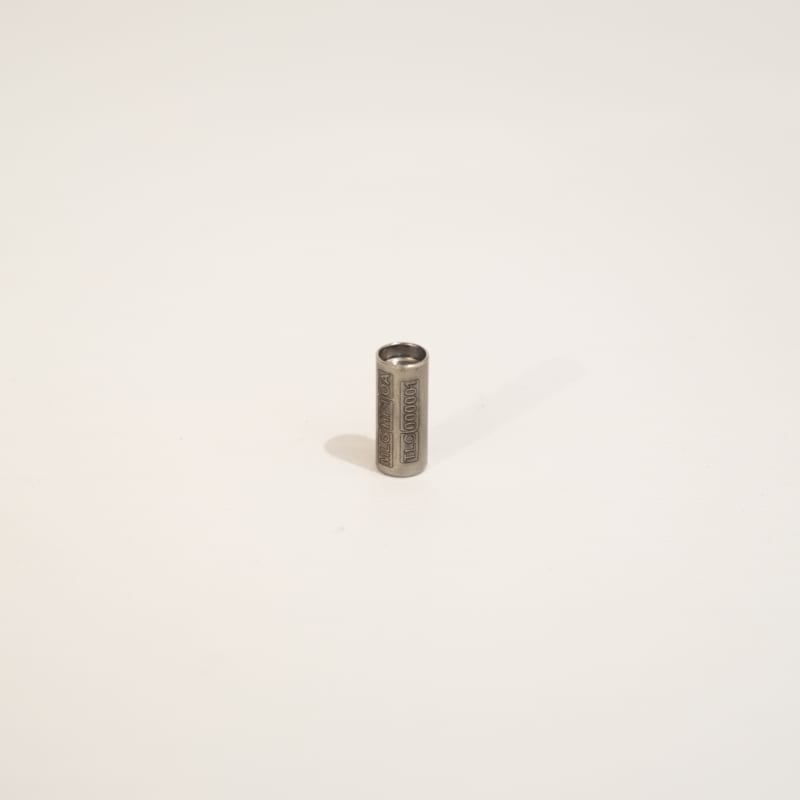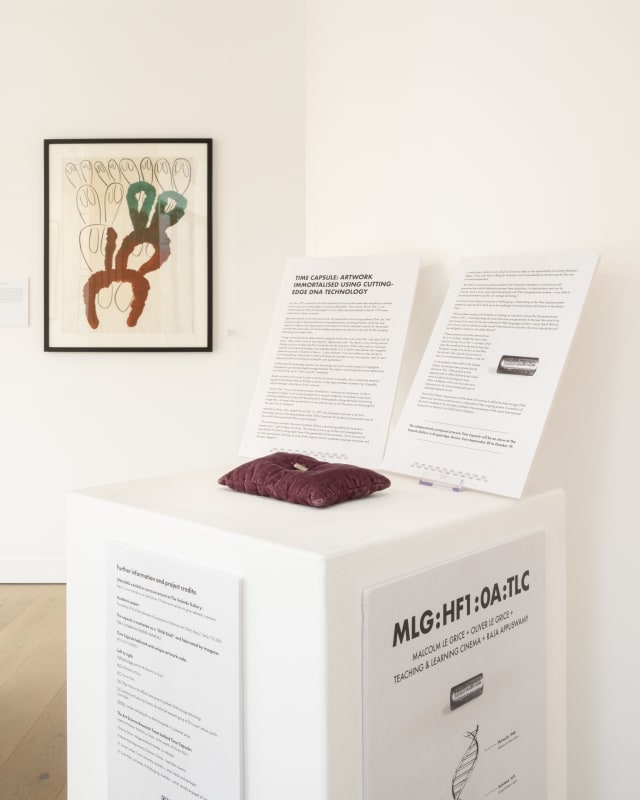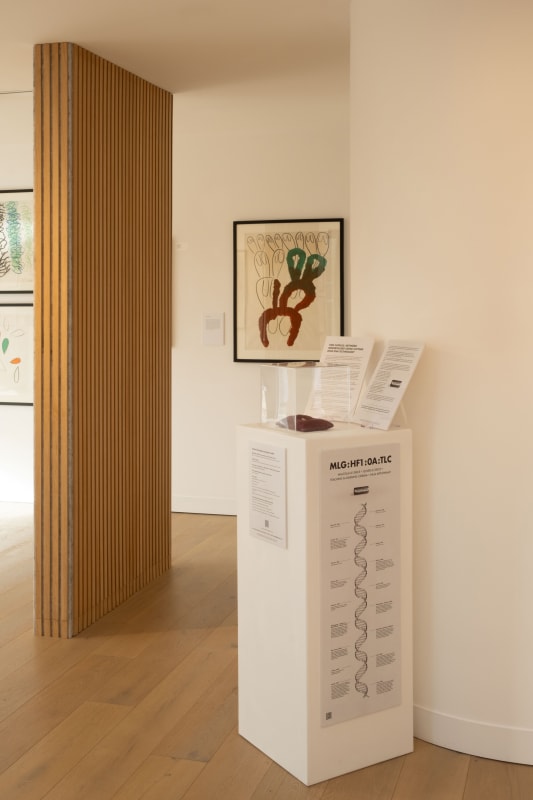An iconic 1971 artwork by UK artist Malcolm Le Grice has this week been encoded on synthetic DNA as part of a cutting edge art-science collaboration. The artwork, Horror Film 1, was transformed into DNA and packaged in a tiny metal capsule predicted to last for 1000 years without loss or data corruption.
Believed to be the world’s-first test case for the preservation of art using synthetic DNA, the Time Capsule project is the brainchild of an international team consisting of artists, archivists, and scientists. Professor Raja Appuswamy from Eurecom in France, lead data scientist for the project, said that the preservation of cultural artefacts represents an important use case for the emerging technology of synthetic DNA.
“Using current standards, data stored on magnetic media has a very short life - only about 20-30 years - after which it starts to lose integrity,” Appuswamy said. “So, there's a very strong case for finding a solution to keep significant artworks over the long term. DNA, when used as a storage medium, has several advantages over magnetic media. It is 10 million times denser than magnetic tape and can store 1 Exabyte of data in 1 cubic millimetre. It can last millennia when stored at room temperature. Data stored in DNA will always be readable as we, as a species, need to read (sequence) DNA for biological and health care applications.”
Furthermore, the technology requires very low energy use and its carbon footprint is negligible compared to conventional digital storage methods. This makes it an ecologically sound method and one which backs up its “Ultra Long Life” credentials.
Media art archivist Dr Louise Curham of Curtin University in Australia, who co-leads the research, agrees that synthetic DNA could offer a solution to the urgent problem of preserving ‘intangible cultural heritage’ items like Le Grice’s artwork.
“Horror Film 1 is an unconventional piece of media art. It exists as an experience. Unlike a
standard art object, it can’t easily be placed in a museum collection. Its multiple components including detailed instructions for the performer’s choreography, alongside audio and moving image files - all need to be recombined in a very precise way so that the piece can be brought to life again for an audience.”
Malcolm Le Grice, who created Horror Film 1 in 1971, has long been a pioneer of art and
technology.He was a founding member of the 1960s Computer Art Society and produced some of the world’s first experimental films using computers. “The technology involved in the use of synthetic DNA is a fascinating method for long-term preservation”, said Professor Le Grice. “My interest is now to go further and investigate the possibilities that DNA coding might have in the generation of new artworks. This is an area for my next experiments, drawing on some of the original work on computer language structures and Boolean Algebra”.
In recent years, Malcolm’s son Oliver Le Grice has taken on the responsibility of curating Malcolm’s legacy. Oliver notes that it is fitting for Malcolm’s work to be selected as the test-case for this new art-science experiment. “My father’s practice has always existed at the intersection between art and science and questioned the artificial distinction between these disciplines. It is fascinating to see how his artwork, which in many ways deals thematically with DNA and generative systems, is now able to be made permanent using this new storage technology”.
For artist Dr Lucas Ihlein of University of Wollongong, collaborating on the Time Capsule project presents an opportunity to think about the challenge of communicating with humans in the distant future.
“We have been working with Malcolm on creating an instruction manual for the performance
of Horror Film 1, which helps keep the work alive from one generation to the next. But what if we want to send it forward into the next millennium? What languages will be in use by then? Will our 21st Century cultural references make sense? What should we include in this time capsule that will be intelligible to humans in the distant future?”
If these questions sound like science-fiction, this is no accident. Indeed, the shiny metal
capsule housing Horror Film 1’s synthetic DNA looks like something from the Matrix franchise.
Alongside a range of Le Grice’s art and films, the futuristic Time Capsule will soon be on
show in a world-premiere exhibition in the UK. For the exhibition DNA:AND at The Velarde
Gallery, the stainless steel capsule housing the Horror Film 1 DNA archive will be
engraved with an official hallmark and unique artwork code by the Birmingham Assay
Office. Certification of this sort may also have implications for the future commercialisation of collectable digital artworks.
Meanwhile Professor Appuswamy and the team will continue to refine the data storage, DNA
sequencing, and future-communications components of their ongoing project. A summary of the work completed so far has been published in the proceedings of the recent International Symposium on Electronic Art (ISEA) held in Brisbane.
The collaboratively produced artwork Time Capsule will be on show at The
Velarde Gallery in Kingsbridge, Devon, from September 20 to October 19.





